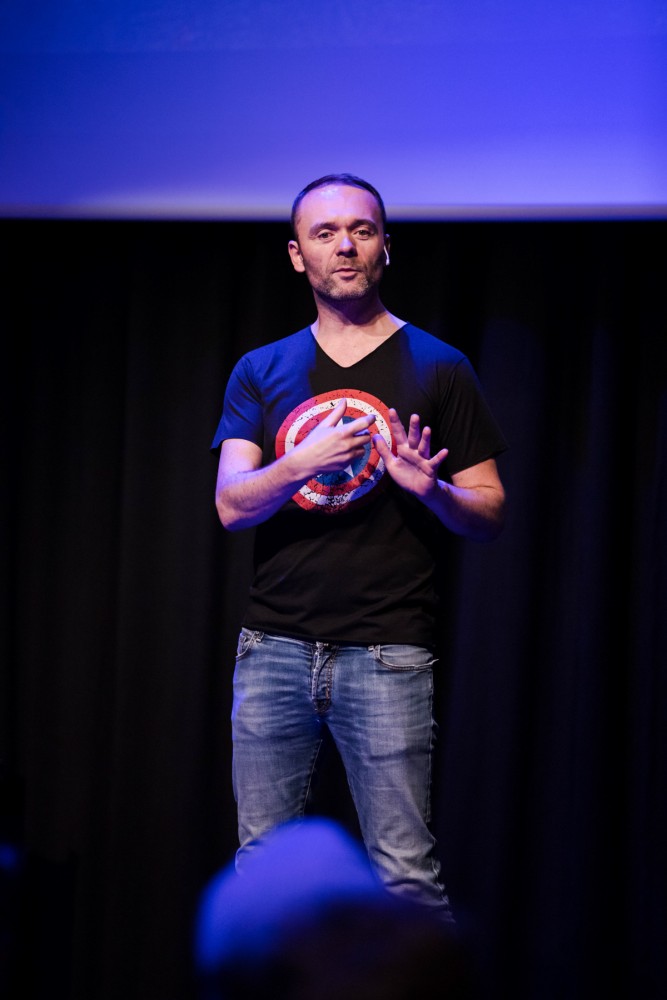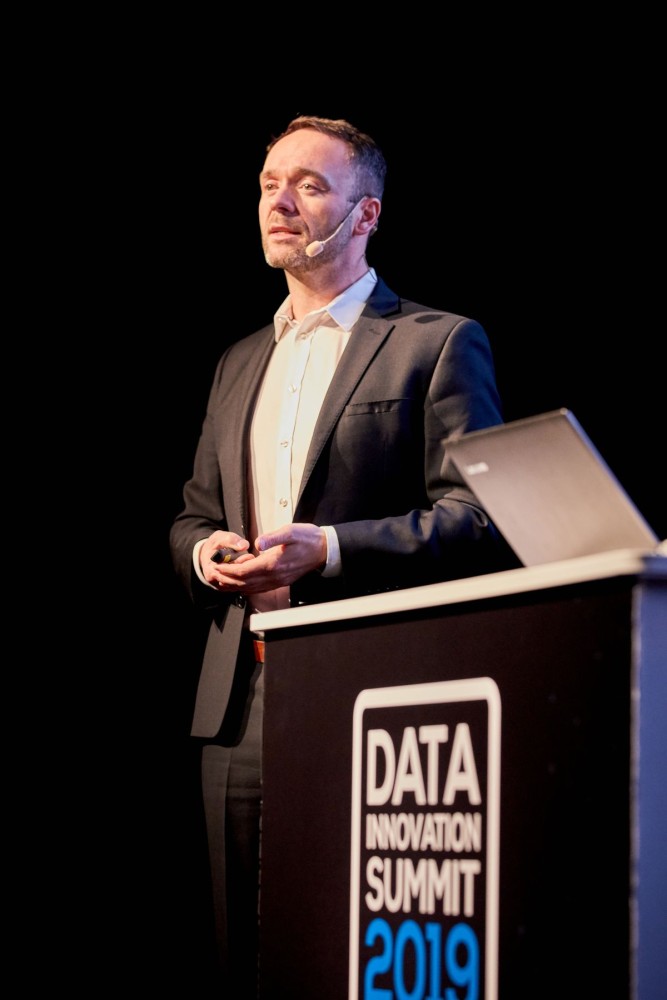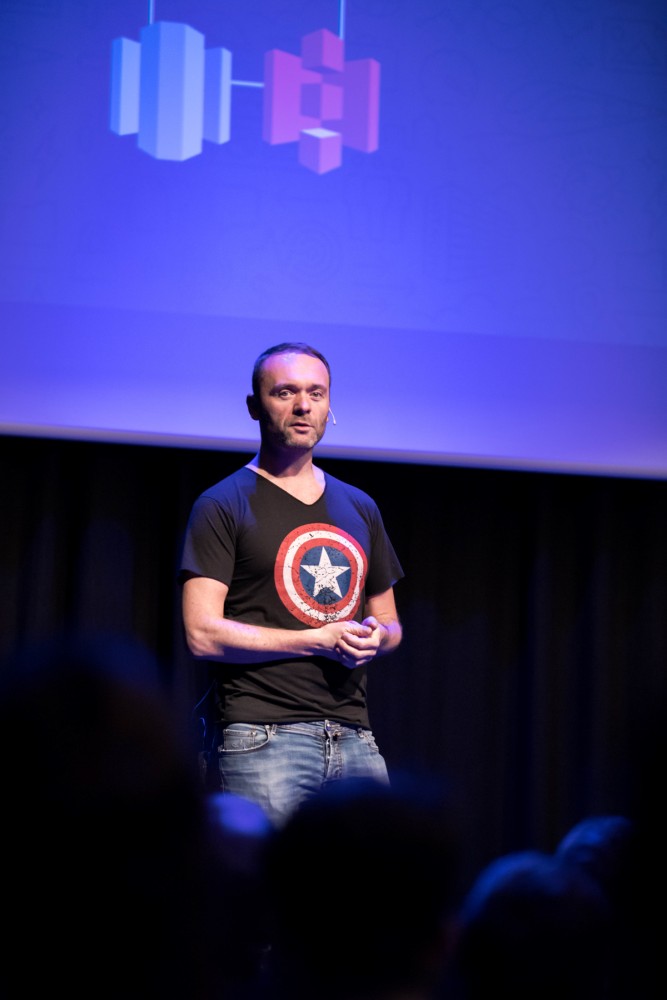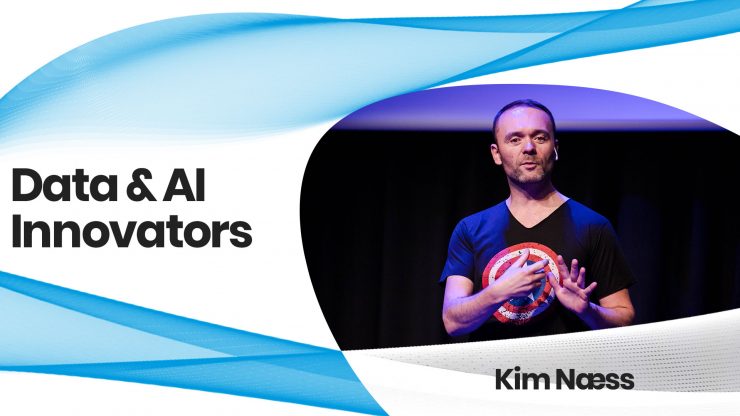Data Innovation Summit turns five next March. Along the way, we have had fantastic speakers unselfishly sharing their knowledge on stage with their peers. Without them, this journey would be impossible.
This interview is part of an interview series dedicated to humanising Data and AI innovation and celebrating speakers who have presented at the Data Innovation Summit. The emphasis lies on the Data/AI people/practitioners, their professional journey and their stories.
AI and machine learning are nothing new, but the cross-industry disruption we are seeing in the last several years is thanks to the advancements in the hardware industry that has enabled greater computational and storage capacities.
Kim Næss, the person regularly representing Hitachi Vantara at our summits and the Data Innovation Summit, talked through his views on the state of AI and data science, as well as how they at Hitachi deal with the most unwanted task for data scientists – data engineering, and gave a short overview of the data processes and maturity level in several industries.


Hyperight: Hi Kim, we are pleased to have you today. You are a regular at our summits, among which Data Innovation Summit 2019. Please tell us a bit about yourself and the company you are representing.
Kim Næss: Thanks for giving me the chance to share some of my perspectives. I have worked in Hitachi Vantara for 2 years now and it has been an exciting journey and a challenging one. There is a lot of buzz around data, IoT and AI and getting the foundation right has often been a key criterion for success. Outside of Hitachi, I am also a board member for Norway’s Computer Association for BI and Analytics doing a little of what you are doing within Hyperight, our conference Make Data Smart in Oslo is Norway’s largest on Data and Analytics. I am also a Subject Matter Expert on IoT and AI for Norway’s Research Council where we grant projects that benefits Norway’s goals in Digital Innovation public funding. Hitachi Vantara is a company made by data as we like to say. We understand the importance of data and support you on your journey to better insights by getting the right data, to the right people at the right time. Hitachi Vantara has helped companies in the Nordics accelerate their Digital Innovation through the use of Data and AI. Most recently, providing Manufacturing Insights to Ericsson in Kista for their 5G manufacturing through our Lumada suite.
Hyperight: As next year the Data Innovation Summit turns 5, could you please summarise for us what are the biggest achievements with data and analytics in the last 5 years from your perspective. And how these developments had an impact on you professionally?
Kim Næss: When people talk about the biggest achievements, you always think of the things closest to you and the projects that benefit us the most. In that sense, I would like to highlight the projects within health where we now see AI trained machines outperforming doctors in certain cases when analysing medical images. When machines can accurately determine how we can live longer and healthier, I believe that is the most beneficial to our society. On a side note, let us give a big thanks to the hardware industry that has enabled AI to transform all industries. AI or machine learning is basically just advanced mathematics and the models we use most frequently today has been around for ages. So we have always had the ability to do this. However, the costs were too high outside of the largest research institutions and governments to actually do anything. Luckily the cost of storage and compute has been in steady decline and has enabled us to analyse more with less and thus finding answers we before could not find because of the cost of storing and crunching the numbers in expensive CPU´s. As an example, just think of paying 500,000 USD per gigabyte in 1981 compared to less than $0.01 per gigabyte today. Todays Data Scientists need a lot of storage and compute to get to the answers that can be so beneficial to businesses and to society, so we should remember to thank the continued development in hardware which has made today’s AI advancements possible.


When people talk about the biggest achievements, you always think of the things closest to you and the projects that benefit us the most.
Hyperight: You’ve mentioned that your strong sides are gaming, manufacturing and transport. How common or different are all these industries when it comes to doing data analytics?
Kim Næss: The use cases and customers I have worked the most within today are those areas, and also education and research. First off I would like to highlight that to build an analytics data pipeline you need to do a lot before you end up with the answers and insights that matters. When you start off on an AI project or an Analytics project, you need to establish what challenges you want to be answered. Then comes to the process of identifying what data you need to answer this, and this can be multiple existing sources, or maybe you need to start creating them. Anyways, gathering that data and refining them through ETL procedures are key success criteria’s before you start analysing the refined data. So within all industries, there is an element for general data capture and refinement, but the further you refine the data and the closer you are to the decision-makers the more domain expertise is needed. I would say the industries that are already mature in collecting and refining data through data warehouses are the ones that are the most ambitious on AI projects. However, when you start talking to the right people even the traditional industries like steel, manufacturing and shipping have seen very interesting findings in our projects with them. We all need to have a conversation about data, and what data can do for you and your role. Think outside the box and be creative. The short answer to your question, gaming and education are the ones I see today that have gotten off to the best start, but within manufacturing and transport, the benefits can be huge.
We all need to have a conversation about data, and what data can do for you and your role.
Hyperight: In your 2019 presentation, you showcased some easier ways for data engineering. What are the challenges when it comes to data engineering and what are some possible solutions for them?
Kim Næss: In a recent Data scientist survey they were asked about what work tasks they were doing the most, and then which of those work tasks they hated the most. It’s no secret that very few data scientists love to do data engineering, yet, it is often the task they do the most, in the worst cases, up to 80% of a data scientist’s time is spent doing data engineering. The reason they don’t like it’s because it is easy, it is not what they took a long education for, they are skilled in Python and R mostly, and there is no love for SQL or Java to do data engineering. So, at Hitachi, we acknowledge this and we have our Pentaho Data Integration which a GUI platform that enables both data scientists and business analysts to do data pipelines in a drag and drop environment with no coding required, as well as having advanced features for the actual data engineers. We can also embed Python and R ++ directly in the data pipeline, or from an IoT stream, so you can get your AI insights in real-time which have opened up new possibilities for our customers.
It’s no secret that very few data scientists love to do data engineering, yet, it is often the task they do the most, in the worst cases, up to 80% of a data scientist’s time is spent doing data engineering.


Hyperight: And lastly, where do you see data, analytics and digital transformation going 10 years from now in 2030?
Kim Næss: Wow, that is a long timeframe. I will make a bet and say we will still not have GAI (General Artificial Intelligence) or General Quantum Supremacy which are two of the biggest buzzes for this decade. I do however see that the use cases where AI will assist humans will accelerate, and advance our society. I am fearful of AI making decisions without human intervention and believe we will see many examples of machine error leading to fatal consequences. However, machines will do more good than harm, and as long as we are wary of the consequences and plan accordingly we should mitigate the risks. Human error is “accepted”, to a much higher degree than machine error. I do not believe in Skynet and the machines taking over, at least not until 2030.
I do believe that our societies will be transformed by shifts including sentient smart cities, connected mobility and more robotics both physical and artificial in all aspects of society as we adopt technologies like 5G, IoT, AI and Augmented Reality. Especially Smart Sentient Cities will be a game-changer where the cities are connected and the cities services are consumption-based and connected, and where AI and IoT enable us to live safer and better than before. I also believe there will be cities created purely because the infrastructure needed to become a smart and sentient city are hindered by today’s infrastructure. In 2030, maybe a new megacity has become one of the biggest in the world, China has already realised this and has started building Xiong’an, a new megacity the size of Tokyo which will be very interesting to follow its progress.














Add comment